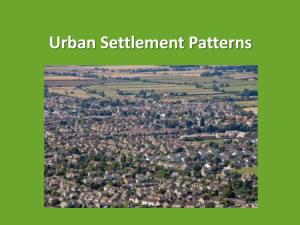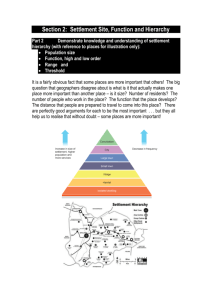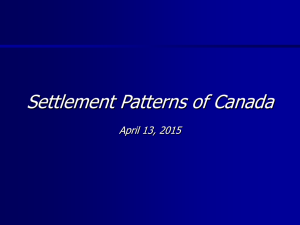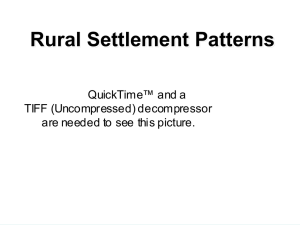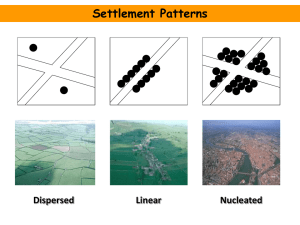Urban Settlement Patterns
advertisement
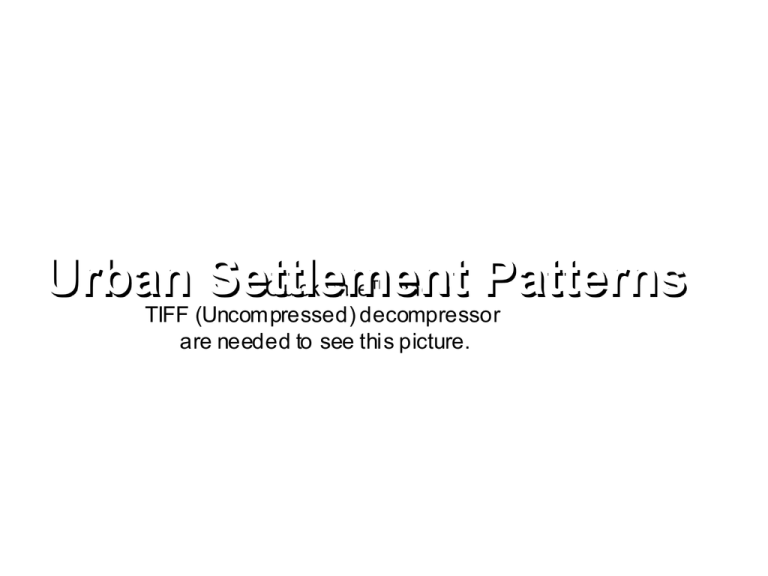
Urban Settlement QuickTime™ and a Patterns TIFF (Uncompressed) decompressor are needed to see this picture. Urban Settlement • Urbanization - the process by which an area changes from being rural to being urban. It includes a great increase in population density and includes expansion of urban functions like manufacturing and services Urban Settlement • Urbanization occurred because of changes in the economy - agricultural machinery was developed More jobs were created Rural residents moved into the towns Immigrants moved to cities QuickTime™ and a TIFF (Uncompressed) decompressor are needed to see this picture. Urban Settlement The Growth of an Urban Place The four main reasons that contributed to a city’s growth are: 1. Manufacturing - manufacturing made sense because there were raw materials (mainly agricultural) that could be used. Markets were also interested in buying the products of the factories - some of these customers were local and others were outside the area and received it by rail Urban Settlement 2. Transportation - railways were constructed and allowed people to move to and from the town. It also encouraged the growth of manufacturing Urban Settlement 3. Resource Use - clay and mineral deposits led directly to the existence of a town or city. The multiplier effect is a result - ie. a new brick factory opens and employs 100 workers. These workers and their families need housing, schools, stores, banks, restaurants, medical facilities, and other services. In order to supply these, perhaps 900 other workers and their families would come to live in the rapidly growing city. As a result 1200 people would be added to the population because of the 100 jobs opening up in the new factory. Urban Settlement • Service Centre - there is a hierarchy of urban services. A small town will offer a grocery store, a post office, an elementary school. A larger town will offer shopping, a hospital, and a high school. Very large cities will offer television production, large universities, specialized hospitals, and entertainments (sports teams or opera companies) QuickTime™ and a TIFF (Uncompressed) decompressor are needed to see this picture. QuickTime™ and a TIFF (Uncompressed) decompressor are needed to see this picture. QuickTime™ and a TIFF (Uncompressed) decompressor are needed to see this picture. Urban Hierarchy There has been significant movement of people in Canada between urban and rural areas over time.In most cases, people in rural areas live in a hamlet, village, or town. People in urban areas live in a suburb, city, or metropolis. These different types of places to live are known as the urban hierarchy (each one is a larger settlement going up the line than the one before it). Urban Settlement hamlet village town suburb city metropolis Urban Settlement Urbanization is the movement of people UP the urban hierarchy. Counter-urbanization is the movement of people DOWN the urban hierarchy (metropolis→ hamlet). While our cities are still getting larger, some people are choosing to move away from cities. •In general, there are now three categories of people living in rural areas. – Newcomers - retain ties to urban core, younger, well educated, well off, managers/professionals – Homecomers - young families returning to provide rural upbringing to children – Ruralites – have never lived in an urban core Urban Settlement Why are people leaving the cities to live in smaller towns and villages? – health issues, security, “community” – “back to nature” movement (desire to live in the country) – increase in telecommuting (less need to be at an office) – cheaper land and house prices QuickTime™ and a TIFF (Uncompressed) decompressor are needed to see this picture.




